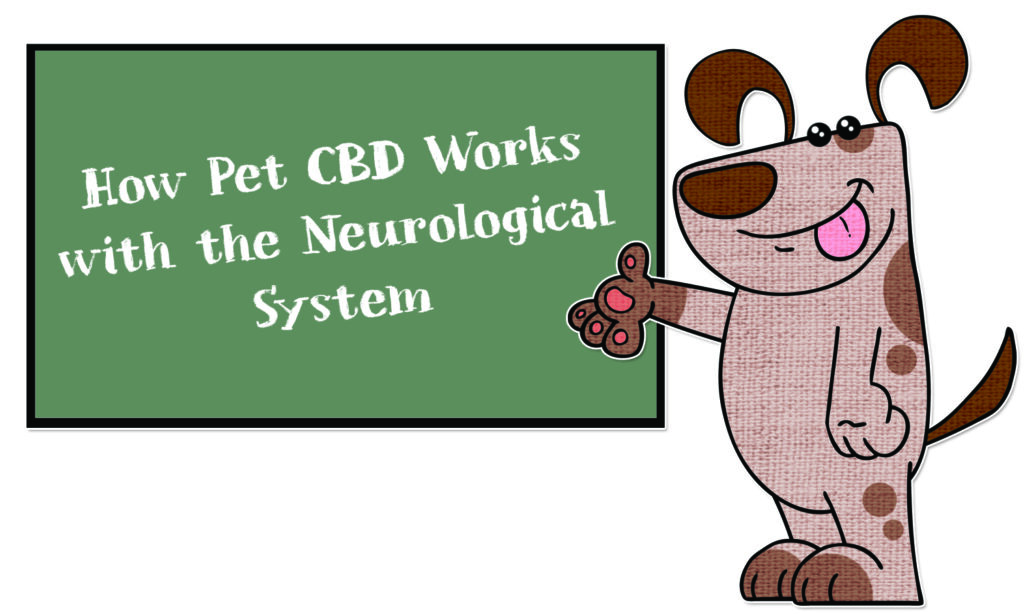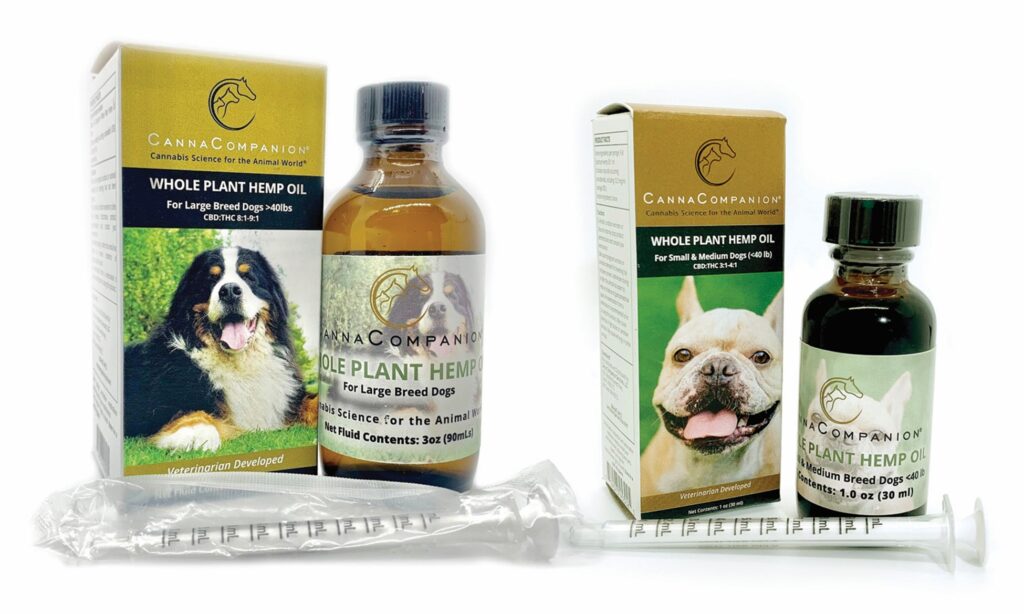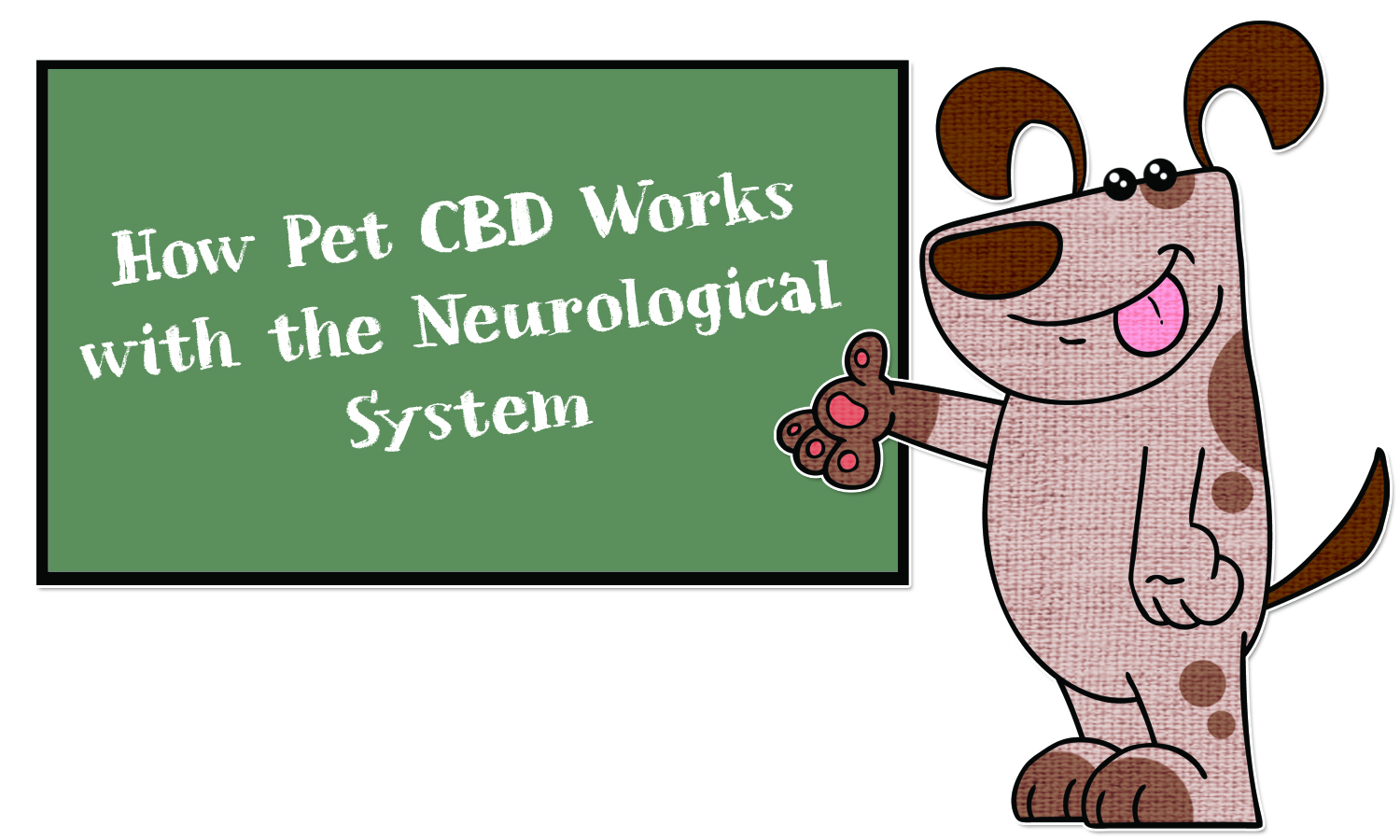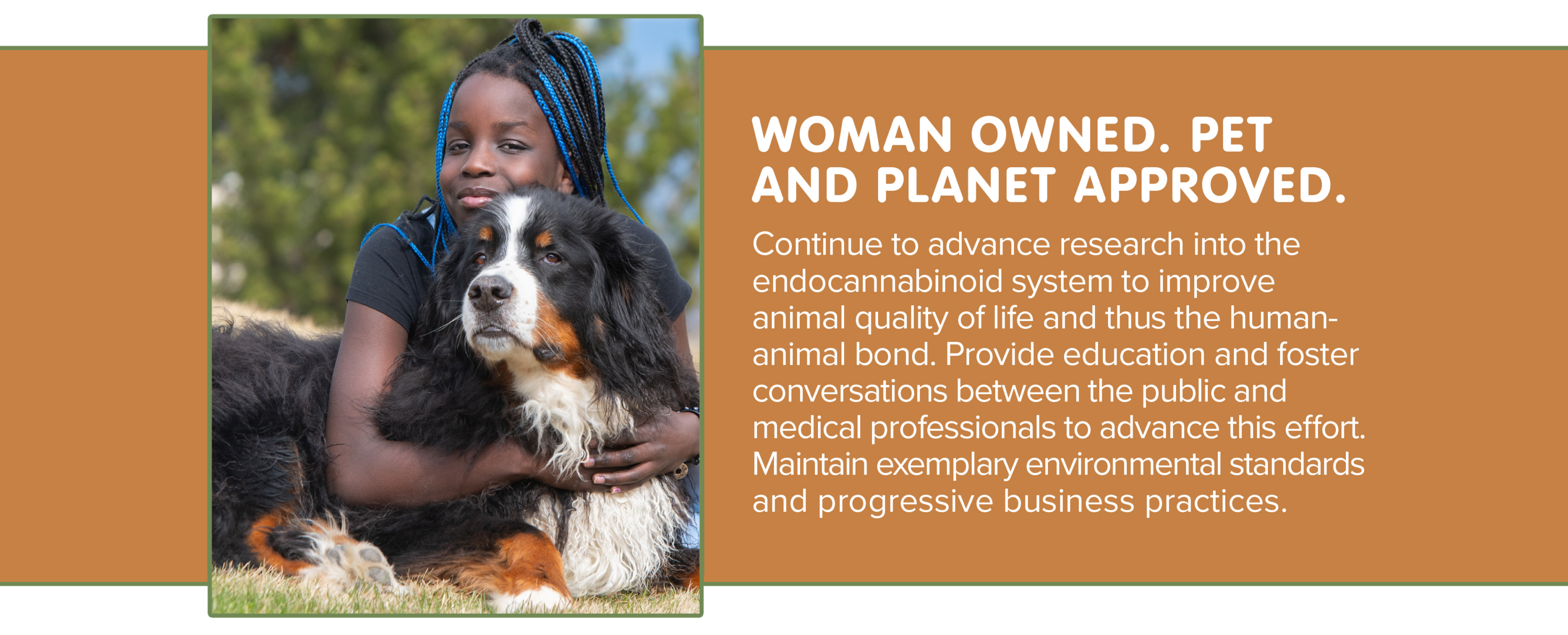How Pet CBD Works with Neurological Systems

You likely have heard how wonderful CBD can be for maintaining neurological health in dogs but it can be difficult to understand exactly how CBD helps. It’s a complex process that is both delicate and robust and has a big impact on the health of your dog.
We believe that your understanding the basics of this process helps you choose the right CBD product for your dog — one that not only helps achieve and maintain optimal neurological functions, but also balances the whole body so your dog can feel their very best. We also believe education is one of the best ways to increase the human-animal bond, and providing that education arms you with good science and fills you and your dog’s life with more happiness.

ECS 101
First let’s discuss what the ECS is – ECS stands for EndoCannabinoid System, the system that CBD primarily interacts with. The ECS is integral to normal development in utero, during puppyhood, into adulthood and into your dog’s senior and geriatric years. ECS receptors are found in nearly every type of cell within the body. Lastly and most importantly, the ECS has only one function within the body: listen to and correct cellular stress.

Now let’s talk about the main parts of the ECS: receptors, compounds and the communication pathways in between.
- Receptors are the workhorses of the ECS, where all the major action takes place. They don’t like to move around much but can be enticed to duplicate or reduce in number when needed.
- The compounds are made internally and taken externally as a supplement and are the carrots that get the workhorse moving in the right direction.
- Communication pathways are what the compounds are carried on to entice the workhorses. These pathways are smart; they can move around anytime the body signals it needs more workhorse connections.

Last bit of ECS 101 then we’ll get to CBD and neurological tissue interactions. There’s a few more details regarding the ECS parts we need to understand.
- Receptors work by shuttling compounds into and out of the cell they’re a part of. As they do so, multiple chemical changes occur within that cell that, in turn, trigger other actions. Receptors can do this quickly and efficiently, but to do so long term, they require balance between what goes in and what comes out.
- The receptors can accomplish their tasks under the direction of a variety of compounds but they do the most with CBD and THC, the most abundant compounds found in cannabis plants. It’s these two compounds which must remain in balance for the receptors to continue ideal functions long term.
- Right now, that balance appears to be a range from perfect (1 part CBD to 1 part THC or a 1:1 CBD:THC) to moderately one-sided (10 parts CBD to 1 part THC or a 10:1 CBD:THC).
- Receptors are happiest when they have CBD and THC in balance and when they have more compounds to work with. Compounds like CBG, CBC, and CBN act as carrot greens to top of a perfect mix of carrots for receptor workhorses to utilize. It’s even better if those carrots were grown in clean soil with pesticide-free water. NOW the workhorse knows exactly what to do, where to do it, and that it can keep doing it as long as the body requires.
- The pathways that link compounds to receptors don’t just do so with other ECS parts. They can and do readily interconnect with other receptor systems like those found within cardiovascular and gastrointestinal tissues. But some of the most remarkable interconnectedness is seen within neurological tissue itself. The ECS pathways weave themselves amongst others that affect GABA, serotonin, dopamine, sensation and a slew of other vital neurological functions.

How CBD Fits Into the Picture
As a major compound CBD packs a pretty big punch on receptors and has an overall calming effect on all bodily tissues. When receptors determine there’s a cell in distress, the whole ECS network kicks into high gear, calling CBD to that location in order to calm things down. When it’s a neurological cell in distress, the soothing effects are often seen throughout the body because CBD works on peripheral nerves and triggers other soothing responses from non-ECS receptor systems.
When CBD arrives on scene, it attaches itself to the receptors calling out most and triggers a calming cascade of events. Those events differ per nerve cell type in distress but the outcomes are relatively predictable: release of calming chemicals for systemic use, release of calming chemicals for nearby nerve cell use, and chemicals for turning on or off other receptors (ECS or not) and altering pathway development (all types of pathways).
Let’s look at an example of how this process might work in a dog with anxiousness. When the brain is overstimulated, as occurs with anxiousness and other neurological imbalances, blood vessels & airways constrict, heart and breathing rates increase, muscles tense, pupils dilate and the body heats up — all in preparation for the potential need to fight or flee. ECS receptors hear the chemical shouts put out by these stressed cells and call for CBD to help. CBD attaches itself to the receptors and calming chemicals are released. Those chemicals relax tense airways, blood vessels & muscles, coax the pupils to normalize and encourage normal heart beats and breaths. Those actions then allow heat to dissipate properly while not generating any more and the body cools healthily.

Now that you have a good idea of how the ECS functions, what CBD can do for neurological tissues, and what that means for your dog, let’s show how Canna Companion products are the perfect bunch of carrots for your dog’s neurological health.
Neurological Support for Dogs
Canna Companion’s Neurological Support CBD capsules offer a unique blend of hemp-based, ratioed compounds, designed to help maintain the optimal neurological functions of your pet. Our formulation uses organic ingredients free from harmful pesticides and heavy metals to support a healthy neurological system with:
- Balanced ratios of major cannabinoids (CBD:THC 6:1-8:1)
- Types of CBD (CBDA:CBD 1:2)
- Combinations of minor cannabinoids (medium levels of CBC and high levels of CBG & CBN)
- Specific terpene profiles high in humulene and linalool.
Potential neurological benefits of our Neurological Support include but are not limited to supporting the soothing functions of the brain, spinal cord and peripheral nervous system.
Whole Plant Hemp Oil for Dogs
Our Whole Plant Hemp Oil for Small and Medium dogs up to 40 pounds delivers a balanced approach to supporting the endocannabinoid system of your small and medium four-legged friends. Small and medium-breed dogs often have different needs than larger dogs and respond better to a lower CBD:THC (higher ratios often cause sedation in smaller patients). This formula also utilizes organic ingredients and contains:
- Balanced ratios of major cannabinoids (CBD:THC 3:1-4:1)
- Types of CBD (CBDA:CBD 1:2)
- Combinations of minor cannabinoids (medium levels of CBC and CBN & high levels of CBG)
- Specific terpene profiles featuring humulene and myrcene.
Our CBD for dogs is formulated to support small and medium canine neurological systems, including but not limited to calming effects within brain, spinal cord and peripheral nerve cells.

Canna Companion’s Whole Plant Hemp Oil for Dogs >40 lb delivers a balanced approach to supporting the endocannabinoid system of your larger four-legged friends, including breeds like golden retrievers and Bernese mountain dogs. Canna Companion veterinary professionals collected data from over 1,000 animals, over the span of 5 years, before making this special large breed CBD oil using organic ingredients and featuring:
- Decarboxylated heavy CBD:CBDA (CBD:THC 8:1-9:1)
- Types of CBD (CBDA:CBD 1:2)
- Minor cannabinoids (medium levels of CBC and high levels of CBG & CBN)
- Specific terpene profile with g-terpinene and linalool.
Our CBD for dogs is formulated to support large canine neurological systems, including but not limited to the normal, relaxed functions of cells found within brain, spinal cord and peripheral nervous system tissues.
Written by Sarah Brandon, DVM, CEO/Owner Canna Companion



